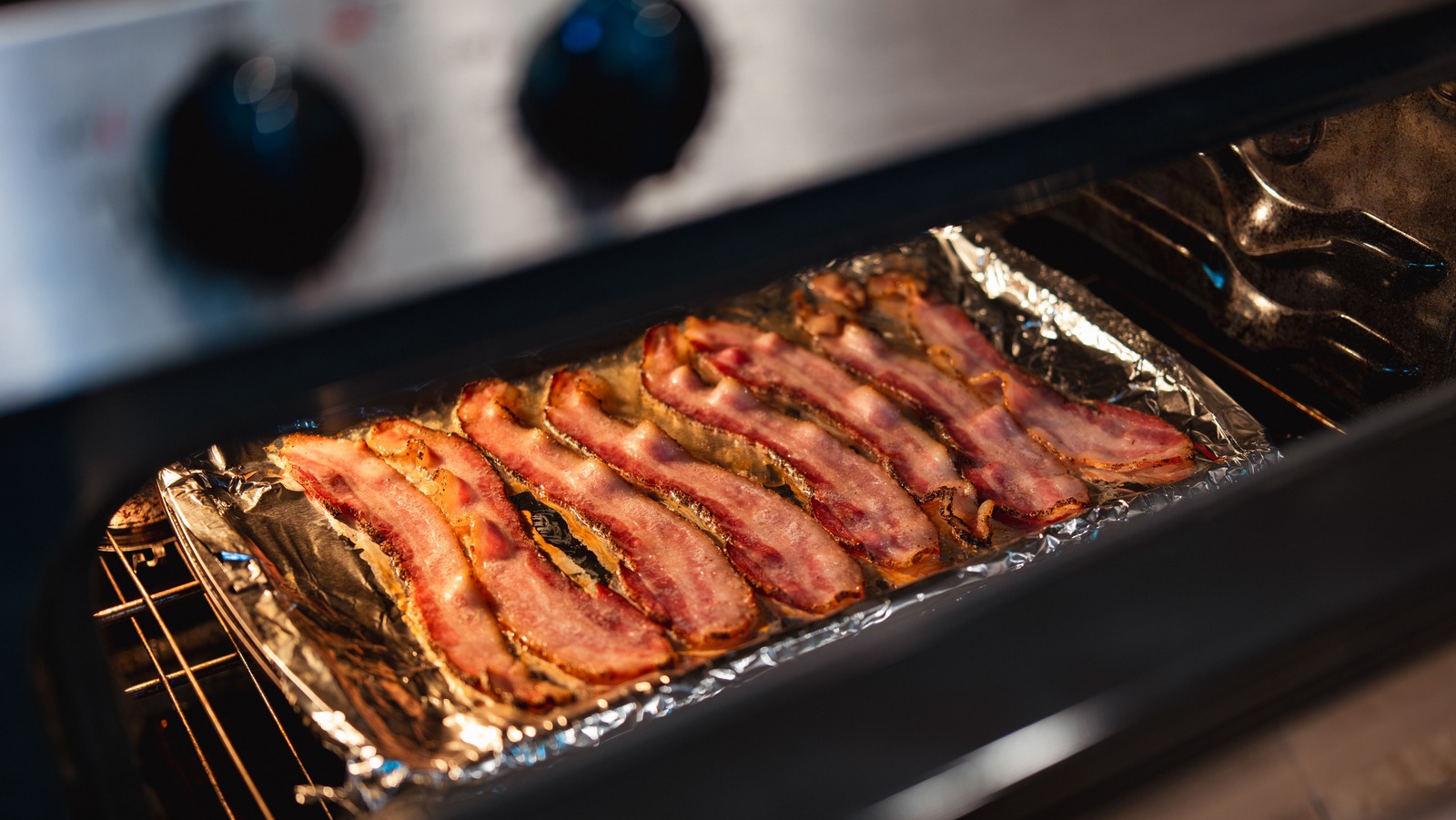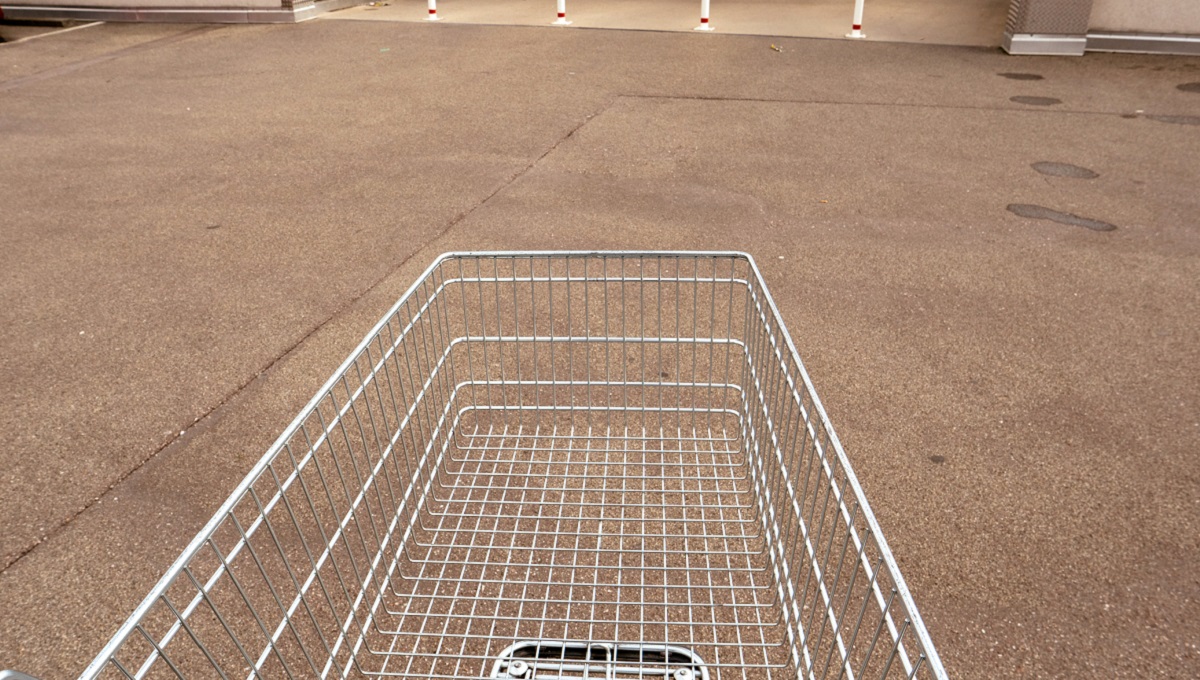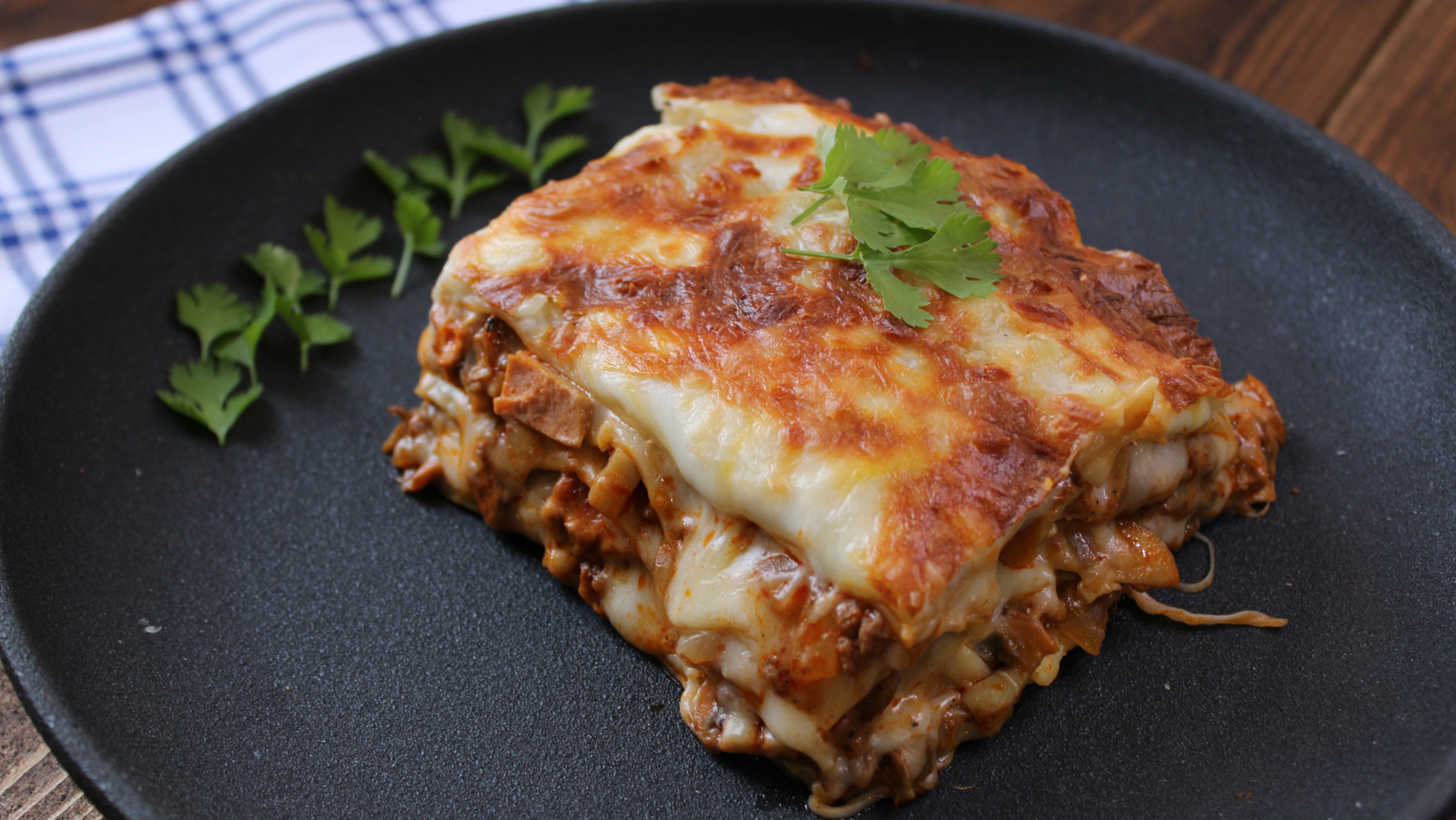
While the traditional method of preparing bacon rashers is on the frying pan, it's by no means the only option. An alternative approach is baking bacon in the oven — a preparation method that has plenty of benefits, making it a favorite among many home chefs. Not only is it the preferred cooking method for large batches of bacon, oven-baking doesn't require the constant attention of stovetop cooking, letting you get on with other culinary tasks.
The oven also provides consistent heat, resulting in more even cooking and perfectly crispy, golden strips. Although oven-baking rashers is usually pretty hands-off, several common mistakes can spoil what would otherwise be a mouthwatering batch of crispy bacon. From using the wrong type of bacon to improper storage techniques, overlooking minor details can turn a simple cooking experience into a complete disaster, not to mention ruin your streaks of pork.

Whether you are a pro or completely new to baking bacon in the oven, there is always room for improvement. Ready to find out about how you can elevate your bacon-baking game? Take a look at our list of the most common mistakes made by home chefs when cooking bacon in the oven and how to avoid them. Failing to take into account the type of bacon you are cooking Bacon comes in a range of cuts, each best suited to specific cooking methods.
Although you can technically toss any bacon in the oven, only certain cuts will shine, while others may turn out underwhelming. The most popular cut of bacon is streaky bacon from the belly of the pig. Available in thick and thin slices, the best rashers for oven baking are relatively chunky, as they crisp up while retaining a satisfying chew.
Thinner slices, on the other hand, can become overly brittle, especially when cooked too long. Aside from streaky bacon, center cut bacon is also a great option for oven baking. Center cut bacon comes from the same part of the pig as streaky bacon — the pork belly — but since it's cut from the part closer to the bone, it tends to be leaner.
Home chefs who like total control over the thickness of their rashers might wish to opt for an uncut slab of bacon. Not only is this usually a more cost effective solution, purchasing a slab of bacon allows for customization — from thin crisps to heartier slices. Cooking thick and thin slices of bacon in the same batch While bacon slices are ideal for cooking in the oven, they are very easy to under or overcook.
If you are preparing uniform slices of bacon then getting them to the desired crispiness level is relatively simple — all it requires is keeping an eye on the timer and frequent visual checks. Preparing thick and thin slices of bacon in the same batch, however, is an entirely different story. In fact, we recommend taking more time and preparing each batch separately to ensure that the rashers turn out precisely how you want them.
Since you should be cooking bacon starting from a cold oven — more on this later — regular or center cut slices of bacon might already be fully cooked before the oven even hits the intended temperature. Conversely, thicker slices of bacon will need longer to reach the same level of crispiness — likely a few extra minutes after your oven reaches the set temperature, which should be around 350 F. Not considering nitrate-free bacon The production of bacon rashers as we know and love them starts with skinning and trimming.
Once the pork belly is cut into strips, the meat is cured with salt and nitrite, processed in large ovens, and smoked. Bacon streaks can be either wet-cured in brine or dry-cured in a rub — a process that extends its shelf-life and makes the meat less perishable and more flavorful. The words nitrites and nitrates are often used interchangeably, as nitrates are converted into nitrites during the curing process.
Since the World Health Organization has classified nitrates and nitrites as potentially carcinogenic, more people have been turning to "nitrate-free" bacon, which utilizes natural — rather than synthetic — nitrates in the curing process. . While this new product has put some minds at ease, others have questioned whether "nitrate-free" bacon is really a healthier alternative to traditional bacon since it still contains the offending compound.
In fact, some "nitrite-free" bacon products have been found to contain more than double the amount of nitrates than standard bacon. Still, the choice is yours. Not experimenting with different bacon flavors There is no denying it — bacon is a treat.
Savory, smoky, and slightly salty, the beloved ingredient is a favorite in bacon and eggs, , and . However, even if you are perfectly satisfied with classic bacon, there is no reason why you shouldn't expand your horizons by experimenting with different bacon flavors. From classic to more imaginative, bacon flavors have evolved to cater to most palates.
Some of the more traditional choices include offerings such as hickory-smoked bacon and applewood-smoked bacon. On the more adventurous end of the spectrum, bacon flavors also include less expected choices like bourbon-barrel-smoked bacon, sun dried tomato and basil bacon, and jalapeño bacon. If you don't happen to find your desired bacon flavor at the grocery store, you can also flavor bacon in your own kitchen.
And the easiest way to make flavored rashers is in the oven. Simply layer the bacon on a baking sheet, brush each slice with your favorite flavoring mixture, and let it infuse into the bacon. Cooking bacon that isn't fresh While bacon may have a longer shelf life than some other meats, it's not going to keep indefinitely.
Firstly, always keep an eye out for a sell-by date on the packaging when purchasing bacon. If unopened, raw bacon can be refrigerated for up to two weeks. This timeframe decreases to one week once the bacon packaging has been opened.
If you change your culinary plans after purchasing your rashers and know that they won't be cooked anytime soon, it's best to freeze them. Unopened bacon keeps up to eight months in the freezer. Once opened, bacon can be stored in the freezer for up to six months.
If in doubt, there are several tell-tale signs that your bacon belongs in the trash can. Spoiled bacon may appear grayish, greenish, or brownish, or a combination of the three. If a part of the pack has gone moldy, throw it out immediately — cutting off the offending part of each strip and using the rest isn't an option unless you want to risk a nasty bout of food poisoning.
An unpleasant, rancid, sulfuric smell and slimy texture are other indications that your bacon is no longer safe to eat. Failing to store your bacon correctly Following a few simple steps when purchasing and storing bacon can help extend its freshness and maintain its quality. When selecting bacon at the supermarket, place it in your trolley just before reaching the register to minimize the time it's left unrefrigerated.
Bacon is often stored in vacuum-sealed resealable bags, which are ideal for storing it in the fridge. Simply use as much of the product as you need and reseal the bag before placing it back in the fridge. If you have purchased your bacon at the butcher's, transfer it to an airtight container before popping it in the refrigerator.
If you decide to place the rashers in the freezer, wrap them tightly to minimize the meat's exposure to oxygen. To prevent waste, divide the bacon strips into smaller portions before freezing. This way you won't have to defrost the entire batch each time you only want to bake a few slices.
To keep the bacon fresh for as long as possible, wrap each slice in a paper towel before wrapping the meat in a plastic wrap or aluminum foil. Preheating the oven Many recipes stress the need to preheat the oven to ensure that the food cooks at the right temperature right from the get-go. Baked goods, such as or cookies, for instance, rely on precise heat for proper rising and texture.
However, bacon is not one of these foods. In fact, placing bacon in a preheated oven can burn it before it has the chance to crisp up. For the perfect pork ribbons, start with a cold oven and let them cook gradually as the oven heats up.
This will allow for even cooking, preventing the meaty parts of the bacon from burning. More specifically, placing bacon strips in a cold oven allows the fat in the meat to render slowly and evenly, resulting in rashers without any sections that have been scorched or undercooked. Notably, the same goes for searing bacon on a pan — starting with a cold pan gives the fat in the rashers time to render gradually, minimizing the risk of charring.
Failing to let bacon come to room temperature before cooking As with a cut of steak, which shouldn't be cooked straight out of the fridge, bacon should spend a little time outside the refrigerator prior to cooking. For best results, take the rashers out of the fridge 15 to 30 minutes before placing them in the oven — trust us, these extra few minutes will be well worth it. Bacon consists of both meat and fat, with the fat retaining cold longer than the meat.
As such, if you toss fridge-cold bacon straight in the oven, the meat will cook faster than the fat, resulting in either undercooked fat or burnt meat. In addition, if placed in the oven cold, the fat in the bacon is likely to seize up, leaving you with gummy textured strips. Conversely, letting the bacon rest at room temperature will ensure that both the fat and meat cook at the same rate, giving the fat enough time to render.
Letting the bacon strips overlap Just as overcrowding bacon strips on a frying pan is likely to lead to steaming and chewy rather than crispy streaks of bacon, allowing the meaty strips to overlap on a baking sheet can result in a disappointing final product. For starters, cramming bacon strips too closely on a baking sheet can make them stick to one another, making it tricky to separate them once cooked. Overlapping rashers can also lead to uneven cooking, with parts of the slices that are completely exposed overcooking and the parts that are crowded together undercooking.
For best results, arrange the bacon strips in parallel, single-layer lines. Since most ovens are large enough to accommodate at least two baking sheets, this shouldn't be a problem. That said, if you are cooking up a storm for a humongous breakfast gathering, the rashers can touch, as they will shrink during the cooking process.
Overlooking simple ways to minimize mess There is no question — cooking bacon can get messy. Whether prepared in a pan or the oven, grease splatters can be a real headache. Luckily, there are a few simple tricks that can minimize the mess bacon can leave in your oven.
Instead of laying out the bacon directly on the baking sheet, layer the oven tray with parchment paper. There is no need to worry about the parchment paper catching fire since it's oven-safe up to 450 F and your bacon will be baking at 350 F to 400 F. That said, never put wax paper in the oven as it's coated with paraffin, which isn't very resistant to high temperatures.
To make clean ups even easier, combine parchment paper with aluminum foil. Lining the baking sheet with aluminum foil means an extra layer of protection since it will catch any grease that may get through the parchment paper. Unlike parchment paper, aluminum foil can also be molded to fit the baking sheet.
To stop the fat from making a greasy mess in your oven, you can also cover the bacon with an additional layer of aluminum foil. However, if you do this, be sure to take off the foil during the final minutes of cooking to let the bacon crisp up. Once your bacon is perfectly crispy, simply roll up the aluminum foil and parchment paper and toss them in the trash can.
Forgetting to deal with the grease for a healthier bite If you are trying to eat healthier, there are a few simple steps that can reduce the greasiness of your bacon. One is cooking it on top of an oven-safe rack (a standard metal cooling rack should do the trick) set over a sheet pan. Not only will this keep the meat out of the grease as it bakes, but elevating the bacon will also allow the hot air to circulate around it, cooking it from all sides.
Using a rack will also let the bacon grease drip down, making it nice and crispy. If you don't own an oven-safe rack, you can crumple up a sheet of aluminum foil and set the bacon on top to keep it above the grease. Whether you bake your bacon directly on a sheet pan or on an oven-safe rack, there is an easy way to reduce its saturated fat content even further.
Once the bacon comes out of the oven, place it on a plate lined with two or three layers of paper towels. Place additional paper towels over the top and press gently to absorb the extra grease. Not preparing the bacon in batches for later use Keen to ? Instead of baking a few slices of bacon when you need them, why not prepare a large batch all at once.
This way, you will have crispy pork pieces at the ready whenever you need them. Whether it's a or a , keeping pre-cooked bacon in your fridge can save you a fair bit of time in the kitchen. Considering how easy it is to store cooked bacon, you would be doing yourself a disservice by not keeping some on hand.
Once your bacon is ready, take it out of the oven, wait for it to cool, place it in an airtight container or bag, and pop it in the refrigerator. Oven-cooked bacon should keep in the fridge for up to five days — just make sure that your fridge is set at 40 F or lower. Cooked bacon can also be frozen for up to a month.
To stop the rashers from sticking together, freeze them individually between pieces of parchment paper. Tossing the bacon drippings While for many bacon grease is nothing but an inconvenience, for others, it's a valuable cooking ingredient that can enhance a range of recipes from to soups and sautéed veggies. So what's the best way to get hold of this versatile ingredient? Whenever you bake bacon in the oven, don't discard the leftover fat.
Instead, pour it into a jar and store it in the refrigerator — bacon fat can be stored for up to six months in the fridge or up to nine months in the freezer. It's easy to tell when spoils — it usually has a rancid odor and may even show signs of mold. When you first transfer bacon fat into a jar, you may notice little bacon flecks at the bottom.
To make your bacon grease last longer, it's best to remove them. Luckily, this is pretty easy to do. Simply, strain the grease through cheesecloth or a fine sieve before placing it in the fridge or freezer.
Once cool, the bacon fat will solidify, so it's essential to strain it while it's still in a liquid form. We get it — bacon grease might not be everybody's thing. When discarding bacon grease — or any other fat — never pour it down the drain.
While it is very pourable when hot, grease solidifies when it cools. Once it turns from a liquid to a solid, there is a good chance that the fat will coat your plumbing and trap other debris on its way down. To avoid any potential plumbing issues, it's best to toss any unused bacon fat into the trash.
Recommended.














